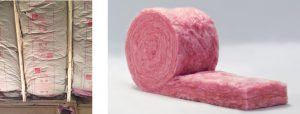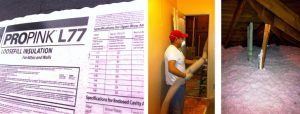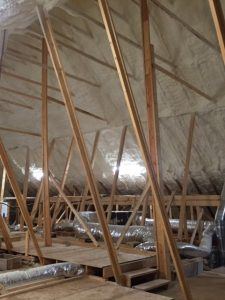Attic Insulation Options
Upgrading your attic insulation is a vital part of making your home more energy efficient and comfortable. With all the different options out there it can be difficult to decide which product is right for you. Luckily, the energy efficiency experts at Eco Three can help navigate you through the world of insulation and give you the necessary information to find the best product for your needs.
First off, let’s identify the mains types of attic insulation you’re bound to see these days: batts (or batten insulation), blown-in (or loose-fill), and spray foam. Each product has its benefits, but it is important to note that if you choose to use either batts or blown-in insulation, it is imperative to establish a proper air barrier underneath the insulation (along the top plates and drywall and framing). Air sealing is critical unless you decide to use spray foam insulation, which is an air barrier and insulator in one. Check out our blog on the “Importance of Air Barriers” for more information.
Batt Insulation
Ba
Blown-in Insulation

Spray Foam Insulation

Typically, spray foam is applied to the roof decking and rafters (underside of the roof) which essentially brings the attic space (traditionally outside of the thermal boundary or conditioned space) inside the thermal boundary for a climate controlled storage area. This also creates a better environment for the long-term preservation of mechanical equipment (your furnace and air handler) and any ductwork contained in the attic because that equipment no longer has to survive the heat of a traditional attic. This specific application to the underside of the roof is also known as “attic encapsulation.” Sometimes, spray foam insulation is applied to the floor of an attic – oftentimes this is done to save money since there is less square footage to cover when spraying the attic floor versus the rafters/roof decking. Either application is perfectly acceptable. The main issue with spray foam insulation from a consumer standpoint is ensuring it is installed or applied properly. If installed improperly it can lead to moisture issues, comfort problems, and will not end up reducing energy bills.
Contact us to learn more and discuss your specific attic insulation needs.